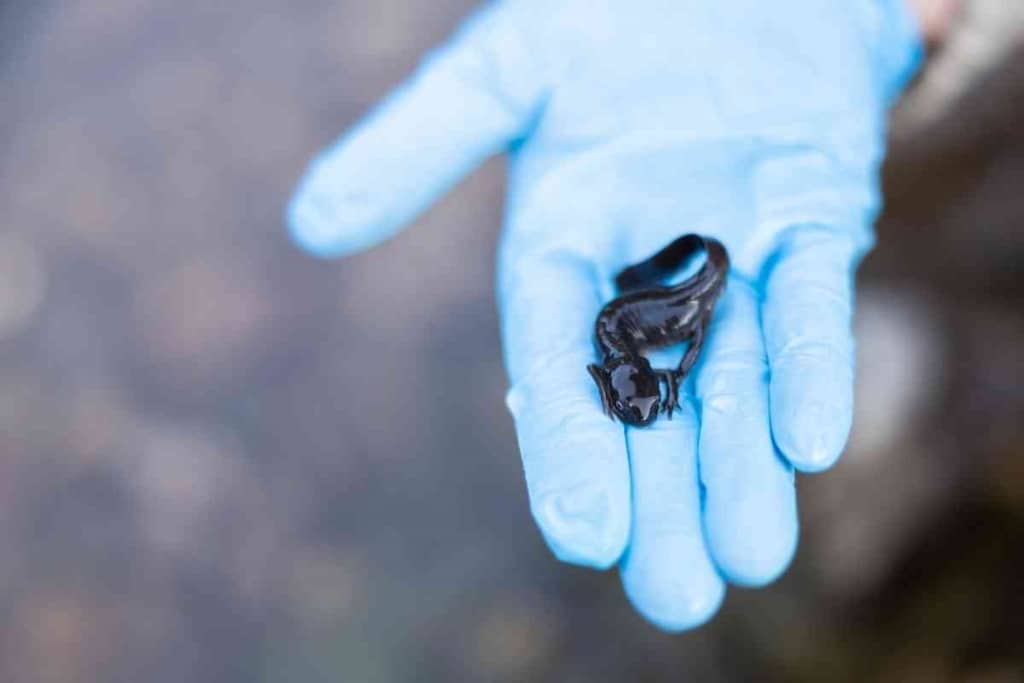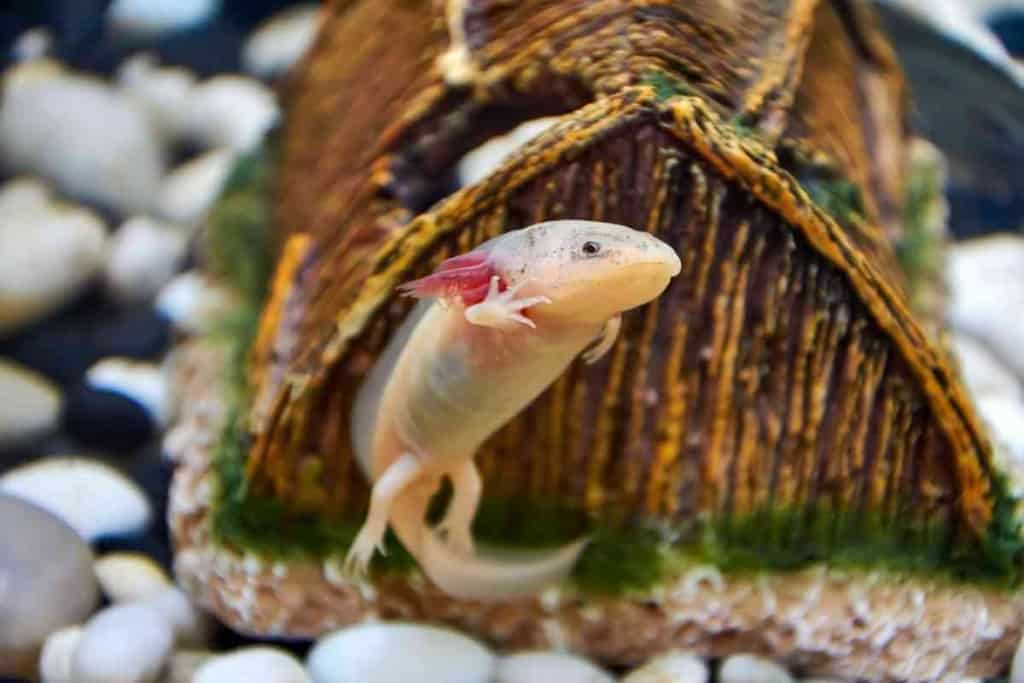Are Mudpuppies and Axolotls the Same?
Within the salamander family, the mudpuppies and axolotls are two creatures that raise confusion. At a glance, these four-legged animals have a similar appearance to their flat heads and narrow bodies. However, slight differences between the two show that they belong to different species.

What’s the difference between a mudpuppy and an axolotl?
The mudpuppy and axolotl share similar traits in physical appearance, but their living habits and availability differ. Axolotls thrive in warmer climates, while mudpuppies prefer to relax in holes and shady areas.
These two salamanders are different and have specific care needs. Do your research and see which one is a perfect match for you! If you consider getting these aquatic salamanders as pets, confirm with the caretaker that you are getting the right one.
Otherwise, read this article and learn about the differences and similarities between a mudpuppy and an axolotl.
Appearance
One of the best ways to tell the difference between a mudpuppy and an axolotl is by appearance.
Based on the shape of their heads, a mudpuppy has a narrow head that fits with its slim body. Axolotl heads are wider by comparison.
Both salamanders have external gills protruding out the side of their heads. These frilly plumes have blood vessels connected to their ends and act the same way as lungs by picking up all the oxygen in the nearby water.
The body color of an axolotl has a wide range due to captive breeding. You can spot an axolotl in various colors, such as pink, gold, brown, lavender, black, etc.
Mudpuppies are commonly seen with a rusty brown color and don’t have unique color patterns to change.
Neotenic

All salamanders and amphibians go through a process called metamorphosis. At this stage of their lives, the creatures go through bodily changes to complete their adult form.
Both mudpuppies and axolotls are neotenic, meaning they keep certain juvenile features as adults. Unlike common salamanders, these don’t lose their gills and never leave the water.
This process also explains why their bodies look underdeveloped. Their bodies can grow without body changes, leaving their final form to resemble a mature larval state.
Size
When comparing the size of the two creatures, one can safely assume that a mudpuppy is slightly larger than an axolotl.
An adult-sized mudpuppy can average between 13 and 17 inches in length. Axolotls can grow up to 6 and 9 inches in length.
While mudpuppies have more protection because of their larger size, axolotls have a desirable appeal that makes them cute and accessible to more living spaces.
Lifespan
If you consider keeping one of these salamanders for a while, know that they can live for more than a decade.
Mudpuppies can live up to 20 years of their life. Axolotls can only live up to 15 years at most.
Location
Axolotls and mudpuppies share the same animal species but not the place of their origin. The difference in regions can explain their range in color and preferred living conditions.
Mudpuppies are native to North America and can populate near lakes, rivers, and other large bodies of water. People report findings of them near the Indiana lakes and reserves.
If you want to find mudpuppies, look around cool areas. These salamanders prefer to rest in places that lack warmth and provide breezes against the sun.
Axolotls are the opposite and crave heat. These aquatic lizards are native to South America and thrive on sunny days in Mexico City.
Primarily, people can expect to find them hanging around the canals and waterways of Xochimilco lake.
Food
The mudpuppy and axolotl families classify themselves as carnivores. They are not picky eaters and feed off any aquatic organisms that fit into their mouths.
Mudpuppies are opportunistic feeders and enjoy small invertebrates like insects, worms, and spiders. When they hunt in the water, they feast on small fish, snails, crayfish, and other amphibians.
Axolotls also remain on a strict diet of crustaceans, snails, mollusks, and insects. These creatures were at the top of the food chain before the rising population of tilapia and perch.
Fishermen can use those salamander appetites to their advantage by baiting them with dead fish inside box traps.
Endangerment
Both creatures can make good pets, but their natural population is declining for several reasons.
Mudpuppies are currently struggling with a loss of habitat. They do not like living around silty or mucky streams because the thick density makes it hard to collect natural oxygen.
They also have bioindicators that allow them to sense changes within their environment. When there is a lack of mudpuppies, this indicates some water pollution, causing the animals to relocate.
Axolotls have similar problems with the inclusion of invasive species. Tilapia and perch have entered axolotl habitats and destroyed the populating numbers.
Also, Mexico City sees these animals as a delicacy. In many parts of Mexican culture, the axolotl is the embodiment of an Aztec god, but their population declines because of overfishing.
Both mudpuppies and axolotls are endangered species, but efforts continue to keep their numbers high. Special pens and labs protect the salamanders while performing breeding projects to boost the number in their dying population.
Availability
If you are considering pet care, access to an axolotl is more common than a mudpuppy. Its colors and body patterns are the results of extensive breeding methods.
Mudpuppies are not bred in large numbers, making them harder to own than an array of axolotls. With little to no breeding grounds for these creatures, there’s a higher chance of getting a wild mudpuppy.
The number of axolotls also increases the number of axolotl owners. There’s a lot more information available on the treatment and care for these aquatic animals.
Care
Since mudpuppies and axolotls come from opposing environments, you can expect their living situation to be different from each other.
Mudpuppies are highly sensitive to water pollution and require clean, purified water. The temperature should be cold, and anything exceeding 72 degrees Fahrenheit is dangerous.
A mudpuppy is more aggressive than an axolotl and lives alone in its tank. The growing size also requires large living spaces to reduce feelings of suffocation.
Axolotls are more low-maintenance creatures that enjoy warm temperatures and can live peacefully with more of their kind.
Cost
These salamanders are exotic pets that don’t match the domestic choice. Finding them can be just as hard as finding an affordable price.
Selective breeding and the addition of equipment make these animals more expensive than wild salamanders.
You can buy an axolotl for around $40-70, while a mudpuppy averages around 44 dollars.
The highest price for overall costs can reach up to $400.
